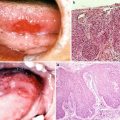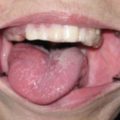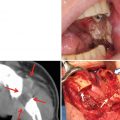1. General QOL questionnaire
(a) WHOQOL instruments
(b) Medical outcomes study 36-item short form (SF-36)
(c) Karnofsky performance status (KPS)
2. QOL questionnaire for general cancer
(a) The European organization for research and treatment of cancer quality of life questionnaire (EORTC QLQ)-C30
(b) Functional assessment of cancer therapy scale general version (FACT-G)
(c) Quality of life questionnaire for cancer patients treated with anticancer drugs (QOL-ACD)
(d) Functional living index for cancer (FLIC)
3. Specific QOL questionnaire for head and neck cancer
(a) EORTC QLQ-H&N35
(b) The University of Washington quality of life questionnaire (UW-QOL)
(c) FACT H&N
4. Oral HRQOL (OHRQOL)
(a) The general oral health assessment index (GOHAI)
(b) Subjective oral health status indicators (SOHSI)
(c) Oral health impact profile (OHIP)
18.2.3.1 General QOL Questionnaire
1.
Several instruments have been developed to investigate QOL; however, most of them are developed by researchers in Europe and the United States. In these, the definition of QOL is different depending on the researcher, leading to different composition of each QOL instrument. Therefore, the WHO started to develop new QOL instruments in 1992, taking into consideration the international comparison in each country including developing countries. After meetings over a 2-year period by QOL experts and professionals in each medical institute in each country, QOL was defined as “an individual’s perception of their position in life in the context of the culture and value systems in which they live and in relation to their goals, expectations, standards and concerns.” The concept of QOL is composed of the following six domains:
(a)
Physical health
Energy and fatigue; pain and discomfort; sleep and rest
(b)
Psychological
Body image and appearance; negative feelings; positive feelings; self-esteem; thinking, learning, memory, and concentration
(c)
Level of independence
Mobility; activities of daily living (ADL); dependence on medicinal substances and medical aids; work capacity
(d)
Social relationships
Personal relationships; social support; sexual activity
(e)
Environment
Financial resources; freedom; physical safety and security; health and social care: accessibility and quality; home environment; opportunities for acquiring new information and skills; participation in and opportunities for recreation/leisure; physical environment (pollution/noise/traffic/climate); transport
(f)
Spirituality/religion/personal beliefs
In 1994, a pilot questionnaire was developed in English. It consisted of 300 standardized items, which were extracted from these six domains. This was verified by the administration of the WHOQOL Pilot Form in 15 field centers to 250 patients and 50 “healthy” respondents. These data were statistically analyzed, and the WHOQOL-100, composed of standardized and cross-nationality equivalent response scales of 100 common items, was completed. Furthermore, the WHOQOL-BREF (WHOQOL-26), an abbreviated 26-item version of the WHOQOL-100, was developed using data from the field trial version of the WHOQOL-100. The WHOQOL instruments can be used in particular cultural settings, but at the same time, results are comparable across cultures. The WHOQOL is now available in over 20 different languages, and its development in further languages is progressing. Their sensitivity to change is currently being assessed. Domain scores of the WHOQOL-BREF have been shown to correlate at approximately 0.9 with those of the WHOQOL-100. The WHOQOL-BREF has also been used in several studies in Japan [9].
2.
SF-36 is a questionnaire used to measure health status in general and was developed by Ware et al. In SF-36, one item is designed to assess perceived change in health status, and each of the remaining 35 items contributes to a score on one of the eight scales: physical functioning, role-physical, bodily pain, general health perception, vitality, social functioning, role-emotional, and mental health. Scores on these eight scales can be used to compute a summary index of physical health and a summary index of mental health. The Japanese version of SF-36 was developed, and Fukuhara et al. have verified its translation, adaptation, and validation.
3.
KPS is one of the earliest and most commonly used indices of patients’ performance status. Recent papers still refer to the Karnofsky scale for validating a new measure. Administered by an observer, this 11-point rating system assesses symptoms, physical activities, self-care, and ability to work, with scores from 0 (dead) to 100 (normal). Although KPS is based on physical performance and dependency, it has been shown to be a valid, if crude, predictor of survival. The WHO has recommended an alternative five-point scale that is simple and easy to use. At present, KPS is used to confirm the validity of a new QOL instrument.
18.2.3.2 QOL Questionnaire for General Cancer
1.
The European organization for research and treatment of cancer QOL questionnaire (EORTC QLQ)-C30 [11, 16–20]
The EORTC QOL Study Group has developed a measurement strategy for the assessment of QOL in clinical trials. A core QOL questionnaire—the EORTC QLQ-C30—is used together with diagnosis-specific modules to increase the coverage, sensitivity, and specificity of the assessments in various patient and treatment groups.
It was designed to be cancer-specific, multidimensional in structure, appropriate for self-administration, applicable across a range of cultural settings, and suitable for use with additional site- or treatment-specific modules. The EORTC QLQ-C30 (version 3.0) consists of 30 questions. Of these, 24 questions form nine multi-item scales presenting various aspects of HRQOL, five functional scales (physical functioning, social functioning, emotional functioning, role functioning, and cognitive functioning), three symptom scales (fatigue, pain, nausea, and vomiting), and a global condition (health and QOL). The remaining six questions form single-item scales describing different cancer relevant symptoms. During the scoring procedure, raw EORTC QLQ-C30 scores are linearly transformed into 0 e100 scales. For global health status and the five functioning scales, a score of 100 corresponds to a high HRQOL. For financial difficulties and the eight symptoms, a score of100 implies maximum difficulty or symptom burden [16–18]. Subsequent versions were built on the same basic principles, culminating in the core 30-item EORTC QLQ-C30 (version 3.0) questionnaire, representing over 20 years of continuous development, refinement, and validation. It is a copyrighted instrument, which has been translated and validated into 81 languages and has been used in more than 3000 studies worldwide. At present, the QLQ-C30 (version 3.0) is the most recent version and should be used for all new studies [19].
While the EORTC QLQ-C30 is an important tool for assessing the generic aspects of QOL, it has limitations. Therefore, a modular approach was adopted for disease-specific treatment measurements. An essential aspect of the “modular” approach to QOL assessment adopted by the EORTC QLG (QOL Group) is the development of modules specific to tumor site, treatment modality, or a QOL dimension, to be administered in addition to the EORTC QLQ-C30. The modules, like the core questionnaire, are designed for use in cancer clinical trials. These modules include head and neck (QLQ-H&N35), bone metastases (QLQ-BM22), hepatocellular carcinoma (QLQ-HCC18), brain (QLQ-BN20), information (QLQ-INFO25), breast (QLQ-BR23), lung (QLQ-LC13), cervical cancer (QLQ-CX24), multiple myeloma (QLQ-MY20), colorectal (QLQ-CR29), neuroendocrine carcinoid (QLQ-GINET21), colorectal liver metastases (QLQ-LMC21), oesophageal (QLQ-OES18), endometrial (QLQ-EN24), oesophago-gastric (QLQ-OG25), gastric (QLQ-STO22), ovarian (QLQ-OV28), prostate (QLQ-PR25), and elderly cancer patients (QLQ-ELD14) [20].
The EORTC QLQ-C30 was developed in European countries. A Japanese version of the EORTC QLQ-C30 was also drawn up by EORTC itself. However, in Japan, where language and culture are different from European countries, is it possible to use the Japanese EORTC QLQ-C30 as a universally applicable instrument? To date, some cross-cultural validations have conducted. In evaluating psychometric testing, internal consistency by Cronbach’s alpha, item discrimination by multitrait scaling analysis, and validity analysis with the ECOG performance score (PS) and the KPS scale were performed. These results show that the Japanese EORTC QLQ-C30 is potentially useful as an instrument and is universally applicable across cultures.
2.
The FACT-G is one of the most widely used cancer-specific QOL instruments that was developed by Cella et al [22, 23]. It has been validated across a wide range of cancer patients, cultures, and languages and can be used to assess the impacts of cancer and its treatment on the physical and psychosocial well-being of patients. The fourth version of FACT-G consists of 27 Likert-type questions covering four domains: physical well-being (seven items), social/family well-being (seven items), emotional well-being (six items), and functional well-being (seven items). Scoring is on a 0–4 Likert-type scale, with higher scores representing better outcome. Summary scores can be calculated for each of these four domains, alongside a single overall score for the instrument. FACT-G meets all conditions such as ease of use (simplicity), credibility, validity, and responsiveness in clinical oncological studies.
The Japanese Version of the FACT-G [25]
FACT-G was translated and its usefulness was verified by Fukumoto et al. [25]. To determine if the FACT-G could be used in Japan, a cross-cultural validation was performed. The Japanese version was created through an iterative forward–backward translation sequence used throughout the FACT multilingual translation project. While evaluating psychometric testing, its construct validity was investigated by factor analysis and multitrait scaling analysis, and its clinical validity was estimated by known-groups comparison using stage, PS, and patient location and validated longitudinally by PS. The FACT-G (version 3.0) was administered to 180 patients with lung cancer. Analyses showed that the scales of physical well-being, functional well-being, emotional well-being, and relationship with doctors were constructively valid in Japan. Japanese patients felt that familial relationships were different than relationships with friends and neighbors, indicating that the social/family well-being scale needed cultural adaptation. Two items concerning coping with illness and acceptance of illness did not load predictably onto their respective scales and were considered cross-culturally problematic. However, clinical validity demonstrated its sensitivity. Japanese FACT-G (version 4.0) has been improved to address the weakness in an attempt to become an instrument that is applicable across cultures.
3.
The EORTC QLQ-C30 and FACT-G are questionnaires developed in Europe and the United States, and the Japanese versions have been developed. However, there is a possibility that different QOL items are considered important in different nations or cultures. Therefore, development of a QOL scale fitting with the lifestyle of patients was sought in Japan. Thus, QOL-ACD was developed by the Japanese QOL Research Group as a generic questionnaire according to a multidimensional construct that could be used to assess QOL of Japanese patients undergoing chemotherapy for different types of cancer. The QOL-ACD is a 22-item, self-administered questionnaire, which consists of four domains evaluating functional well-being (items 1–6), physical well-being (items 7–11), mental well-being (items 12–16), and psychosocial well-being (items 17–21), as well as a face scale (item 22). The entire questionnaire is shown in Appendix A. The four domains were originally designated as daily activity, physical condition, psychological condition, and social attitude, respectively [26, 27]. For all items and domains, a higher score represents better QOL. QOL-ACD is also reported to be useful in patients with head and neck cancer [28].
4.
The FLIC was developed at the Manitoba Cancer Treatment and Research Foundation Centre in Winnipeg. The questions were selected from a first-generation questionnaire consisting of approximately 250 questions. The FLIC contains 22 items to which the patient must respond by placing a slash mark on a linear analog scale that is divided into seven equal intervals. The score from each item is condensed to a composite score, and the higher the composite score, the better the QOL. Domains studied include physical well-being, emotional state, social ability, and family/situation factors. The FLIC has been translated into Japanese and used in several clinical studies; however, validity and reliability have not been confirmed.
18.2.3.3 Specific QOL Questionnaire for Head and Neck Cancer
1.
The EORTC Quality of Life Group develops tumor site-specific modules to be used with a core questionnaire, the EORTC QLQ-C30. One of the first was the module for head and neck cancer patients, the EORTC QLQ-H&N37 [31], later revised and shortened to its final version with 35 items, the H&N35 [32]. This module consists of 7 multi-item scales measuring pain in the mouth, problems with swallowing, senses, speech, social eating, and social contact and 11 single-item scales assessing problems with teeth, mouth opening, dry mouth, sticky saliva, coughing, feeling ill, as well as use of analgesics, nutritional supplements, feeding tube, and finally weight gain and weight loss. The period of the QLQ-H&N35 module is “During the past week.” Items from 1 to 30 are scored on a four-point Likert scale as follows: “not at all” (1), “a little” (2), “quite a bit” (3), and “very much” (4); items from 31 to 35 use a “no” (1) and “yes” (2) format as choices to answer [32]. The module has been translated into 53 languages [20] and is used worldwide as one of the standard instruments for measuring QOL in head and neck cancer patients [33–35]. Some issues have been raised that may hamper the use of the H&N35. One criticism is that patients may feel annoyed by some of the items, for example, those enquiring about problems with sexual functioning [36, 37]. A matter of debate is whether this presents difficulty for the researcher who feels uncomfortable in asking such questions or for the patient who feels embarrassed or irritated in answering. Another criticism concerns items that may not be applicable to some of the patients. For example, questions about swallowing solid food administered to patients who are tube fed or about hoarseness when the larynx has been removed [38, 39]. Little is known about the use of the H&N35 in research, the manner in which psychometric issues are reflected in different languages, and how well the multi-item scales are accepted by patients and investigators.
The Japanese version of the EORTC QLQ-H&N35 was developed by translating the original EU-English version, performing cultural adaptation, and further performing initial psychometric tests for use in Japanese head and neck cancer patients [10, 21]. Phase 1: The first intermediate Japanese version was produced according to the EORTC QOL Unit translation project guideline. The second intermediate version was the result of the backward translation project and two peer-to-peer discussion settings by health-care professionals related to the project. Phase 2: Focus group discussions with team members and semi-structured interviews with 108 participants were conducted to produce the final Japanese version. Cultural adaptation and validation yielded scores of the Japanese version of the QLQ-H&N35 module that are reliable by internal consistency (Cronbach’s alpha) and the validation results showed acceptable correlation results by Pearson’s product moment correlation coefficient (r). The questionnaire was well accepted, and the response rate was high (93.9 %). Convergent validity was moderate to high (from r = 0.55–0.97, P < 0.01), and discriminant validity was low; Cronbach’s alpha coefficients of most scales had good reliability (α ≧ 0.70), except that of the pain scale. In Japan, however, some correlation patterns between scales differed from that in the original European countries and cultures. The use of both qualitative and quantitative methods was important in developing the Japanese version of the QLQ-H&N35 module [10, 21].
2.




The UW-QOL (version 4.0) is a patient self-completed questionnaire and currently tests 12 specific domains relating to the head and neck cancer patient. These are pain, appearance, activity, recreation, swallowing, chewing, speech, shoulder function, taste, saliva, mood, and anxiety. The brevity and simplicity of scoring in UW-QOL make it an easy measure in a busy clinical setting. A UW-QOL composite score from 0 to 100 was obtained by averaging the scores of the domains. When two or more domains were not answered, no composite score was calculated. Scoring is scaled, so that a score of 0 represents the worst QOL and a score of 100 represents the best QOL. The composite 12 (the average of the 12 domain scores) has been used by some investigators when describing HRQOL outcomes, although its psychometric properties have not been reported [11, 40–44].
Stay updated, free articles. Join our Telegram channel

Full access? Get Clinical Tree








